How to use a multimeter? This is a small problem for many new electricians or home users; having a multimeter but not knowing how to use it. Today, we will talk about the functions of the multimeter. The multimeter is an essential measuring instrument for electricians, primarily used for measuring voltage, current, and resistance. Multimeters are divided into analog multimeters and digital multimeters based on their display method. They are multifunctional and multi-range measuring instruments, also known as three-in-one meters or multi-meters. Digital multimeters are more precise, intuitive, and easier to use, so we will focus on digital multimeters. However, analog multimeters have advantages in circuit board repair compared to digital multimeters; each has its strengths.
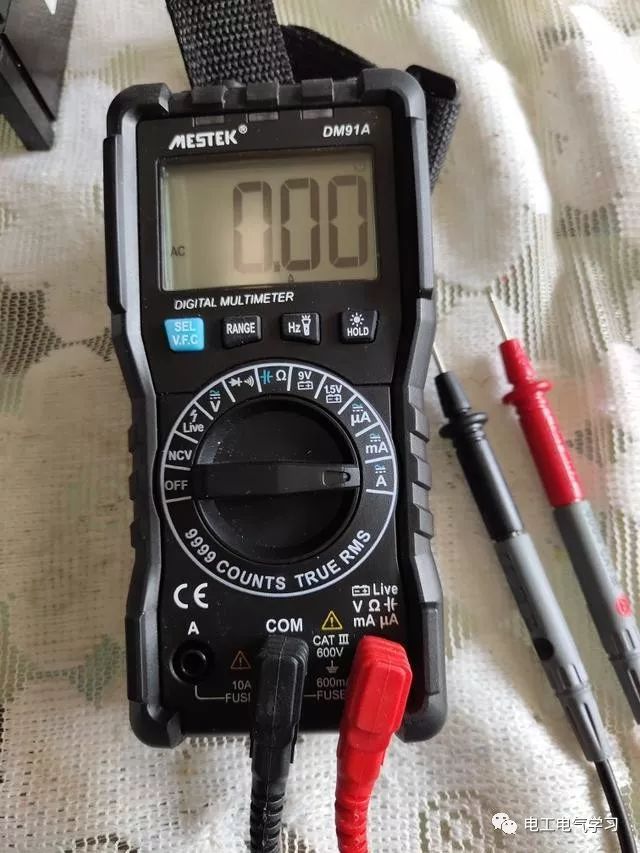
Digital multimeters are foolproof and suitable for beginners.
1. Before measuring, ensure that the multimeter is intact and the readings are correct. The test leads should be in good condition, and any accessories should be intact. Especially when measuring high voltages, ensure that the insulation of the test leads is good.
2. Select the appropriate range according to the measured object: choose the voltage range for voltage measurement, the current range for current measurement, and the ohm range for resistance measurement. The test leads should be plugged into the correct sockets. For voltage and resistance measurements, the black lead should be plugged into the COM port, and the red lead should be plugged into the V/Ω port. It is crucial to note that when measuring voltage, the test leads must not be plugged into the current socket; otherwise, the multimeter may be damaged, and in severe cases, electric shock may occur. Therefore, everyone must select the appropriate range and connect the test leads correctly before measuring. When measuring DC voltage, pay attention to polarity; the red lead is positive, and the black lead is negative (for analog multimeters, it is the opposite: the black lead is positive and the red lead is negative).
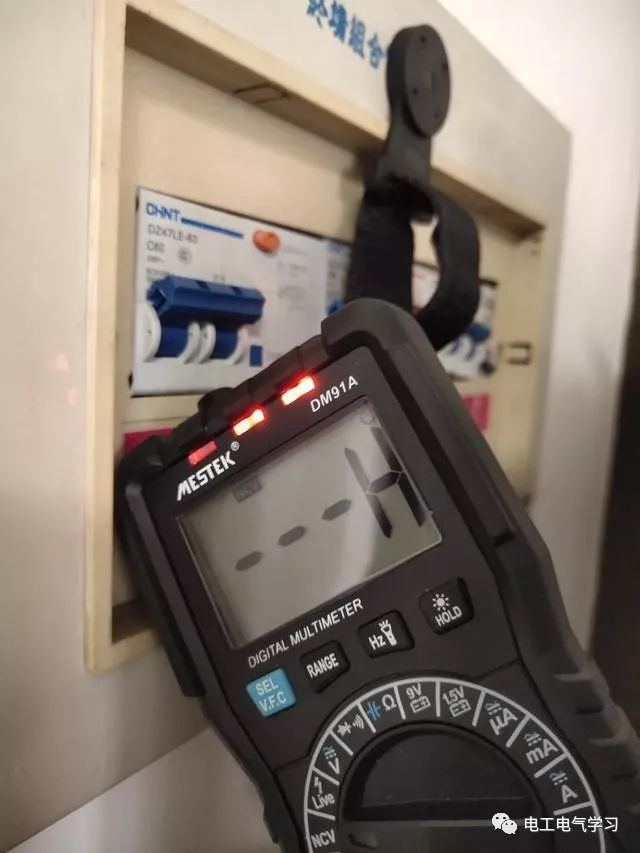
NCV mode is used to measure whether wires and cables are live without direct contact.
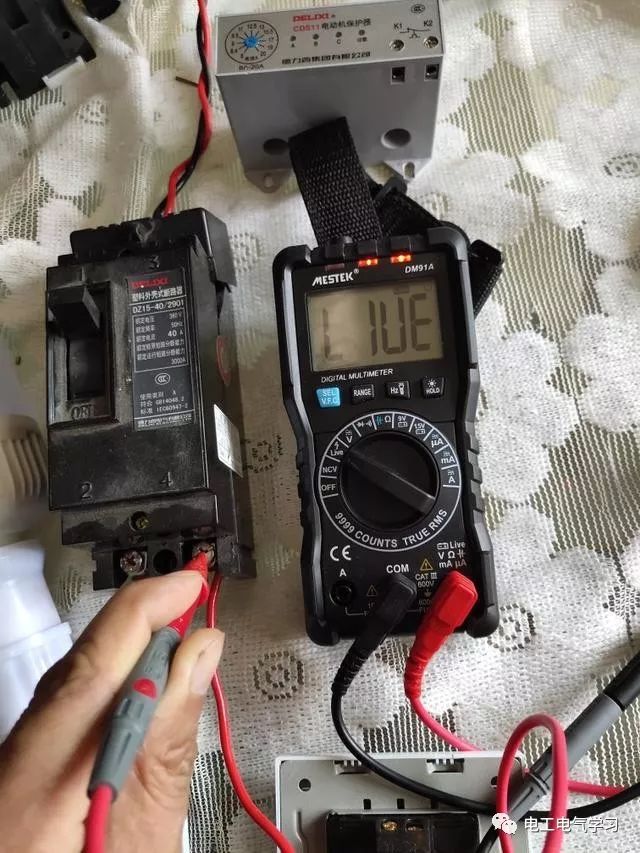
The live mode detects the hot and neutral wires in a circuit.
From the above two images, it can be seen that NCV mode acts like a non-contact voltage tester, allowing the user to check whether a wire or cable is live without breaking the insulation. The live mode is what is commonly referred to as the hot wire (L line), which requires contact with the electrical device to measure. Many multimeters now come with NCV functionality and temperature detection capabilities, making them especially suitable for air conditioning repairs.
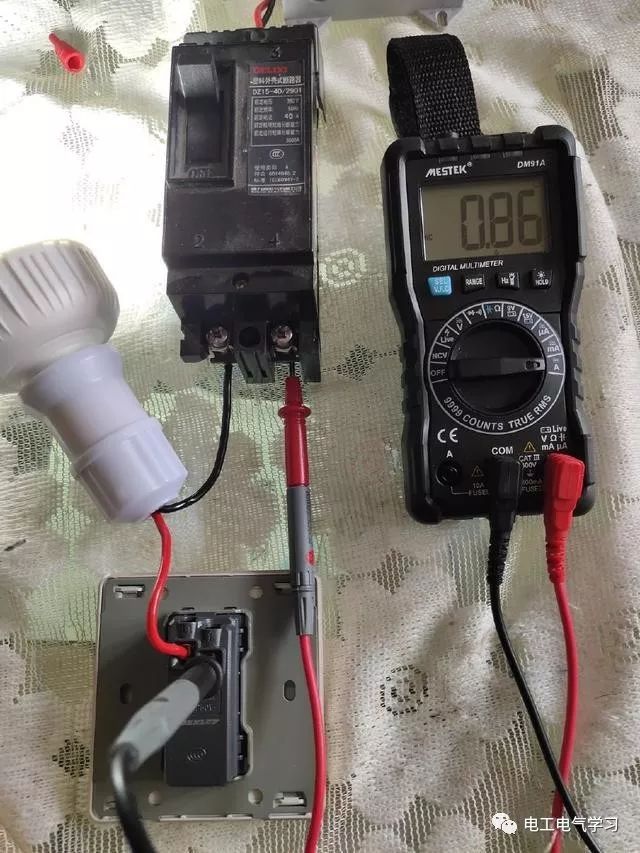
Using the current range on a multimeter.
The current range of the multimeter is not often used in practical applications unless one is specifically engaged in circuit board repairs. They are connected in series with the electrical device, as shown in the figure. It is crucial to distinguish between AC and DC. Voltage measurements should not be confused, as this can easily cause a short circuit and damage the multimeter. Additionally, it is important to follow the principle of measuring from large to small. When measuring high currents, the red lead must be plugged into the 10A socket, and care must be taken not to exceed the multimeter’s range.
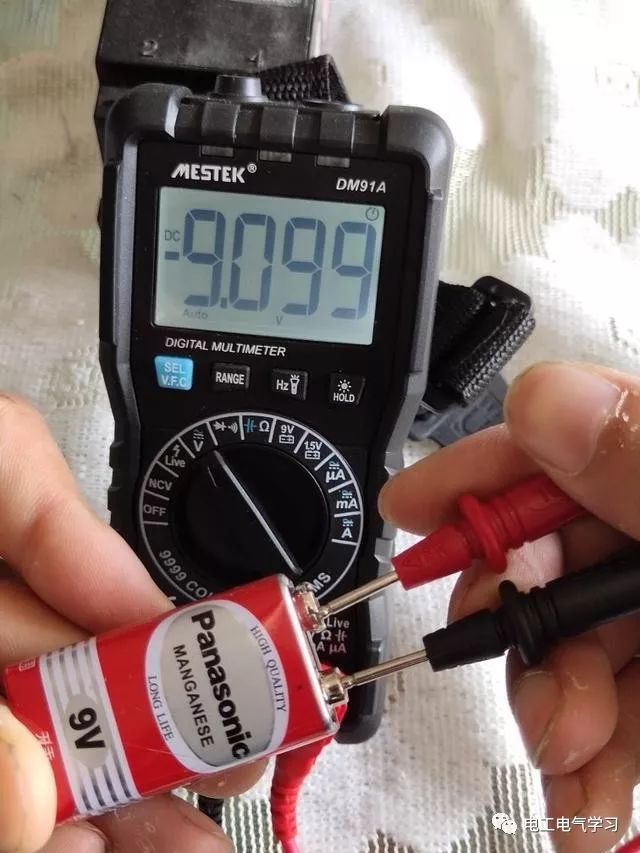
When measuring a battery, the red lead is positive, indicating that red is the negative terminal.
As for the battery range, it is straightforward and simply measures the battery’s voltage. As we see in the image, how do we measure voltage? We switch to the voltage range, first distinguishing between DC (Direct Current) and AC (Alternating Current). The DC voltage range is generally used for online testing of circuit boards, which requires live testing. This is commonly seen in the home appliance repair industry and in professional circuit board repairs, as well as in mobile phone repairs, which also require live testing. The AC voltage range is widely used in household circuits, companies, shopping malls, and various high and low-voltage electrical devices. The first step in repairing electrical devices is to check whether the device is powered. It is important to select the correct scale on a multimeter with a scale; generally, AC ranges include 20V, 200V, 600V, and 750V. Why is there a 750V range? Because there is also low voltage at 660V.
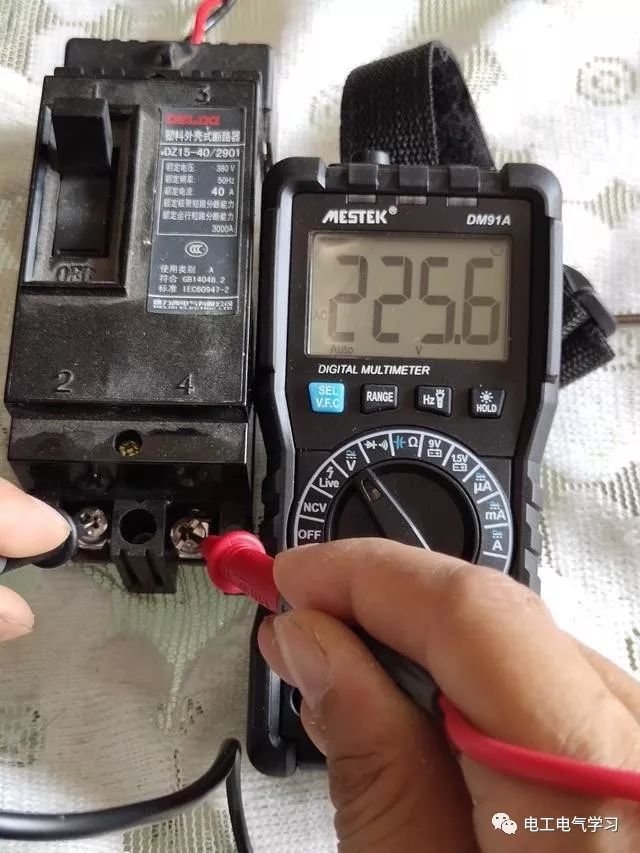
Online testing of AC voltage.
To determine whether a circuit is leaking or short-circuiting, the primary method is to check its resistance. Therefore, the most crucial range on the multimeter is the resistance range. To check the continuity of wires, the buzzer mode is generally used. To test diodes, transistors, and power tubes, the diode range can be used.
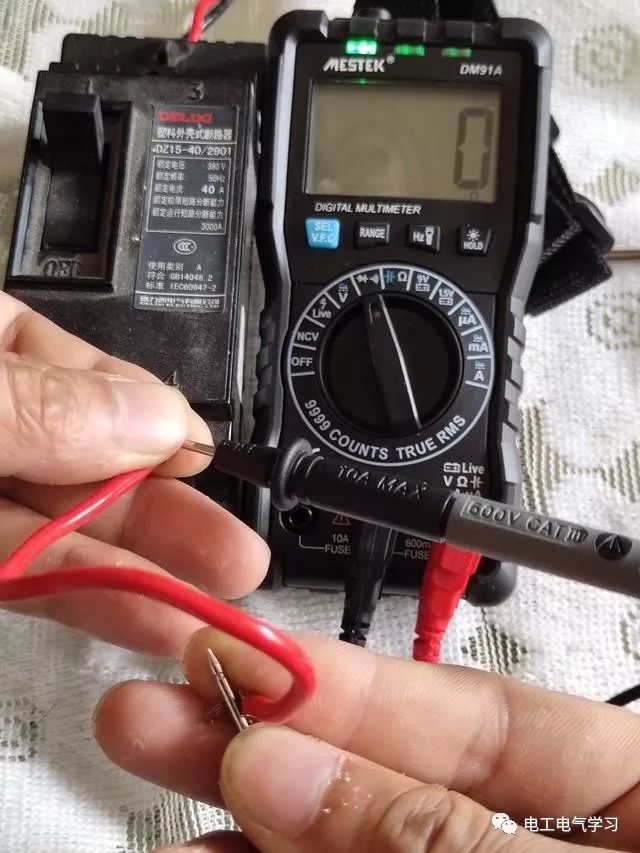
Testing wire continuity.
When we set the multimeter to the resistance range, for example, for a cable or household electrical BV wire, the resistance should be greater than 500KΩ. If it is below 500KΩ but above 200KΩ, it indicates a slight leakage. If it is below 200KΩ but above 20KΩ, it indicates moderate leakage. 20KΩ indicates severe leakage, and the leakage protector will definitely trip.
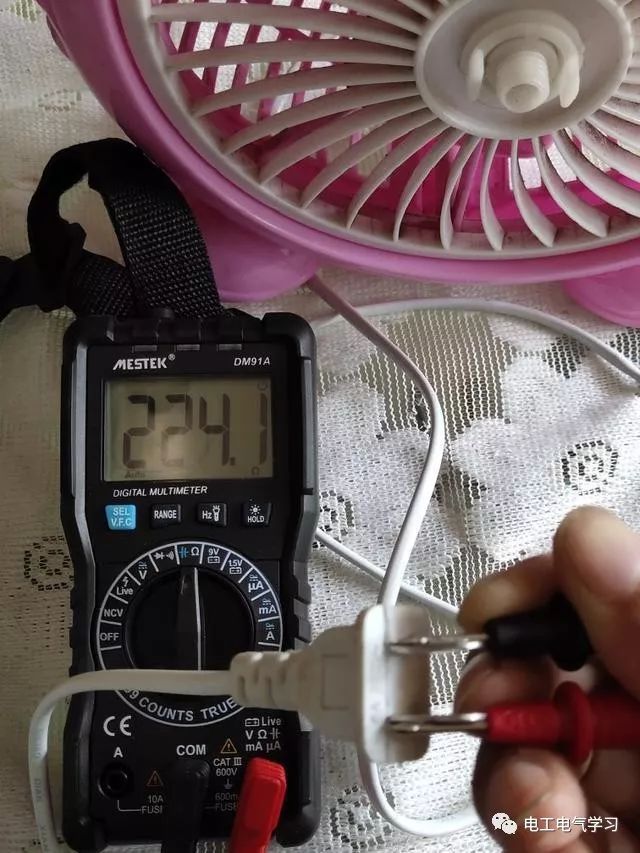
Measuring the resistance of electrical devices.
The resistance range can also be used to test the coils of electrical appliances to confirm their condition, such as for fans, air conditioners, washing machines, rice cookers, etc. These all require long-term repair experience. The repair of company electrical equipment often requires the use of the resistance range. Therefore, being proficient in using the resistance range indicates good repair skills.
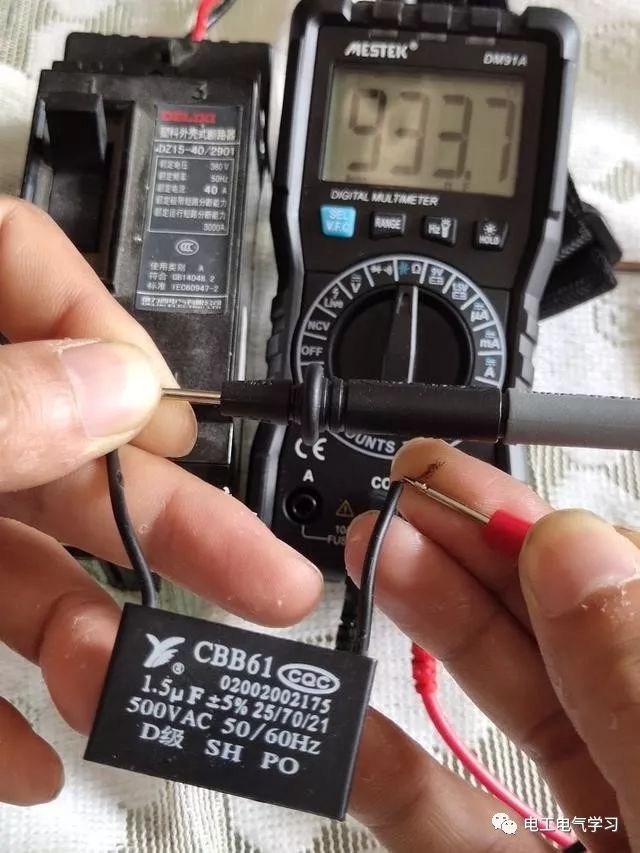
Testing capacitors with a multimeter.
Checking capacitors is relatively straightforward; just switch to the capacitor range. First, discharge the capacitor by connecting the two leads together or shorting with a screwdriver (large capacitors must be discharged to prevent electric shock). If the measured capacity is lower than the rated capacity, it indicates that the capacitor is damaged and needs to be replaced. It is best to match the original capacity; otherwise, if it is too small, the load won’t work, and if it is too large, the increased current may burn out the circuit.
Overall, I have written quite a bit, and I believe everyone has gained a certain understanding of multimeters. If you are a beginner, I recommend purchasing a relatively inexpensive multimeter for practice. I believe you are only one step away from being an expert. Keep going, believe in yourself!
Source: A Small Electrician, Electrical Learning
Scan the QR code below to follow us
Receive our articles every day

↓↓↓ 99% of workers clicked “Read Original”